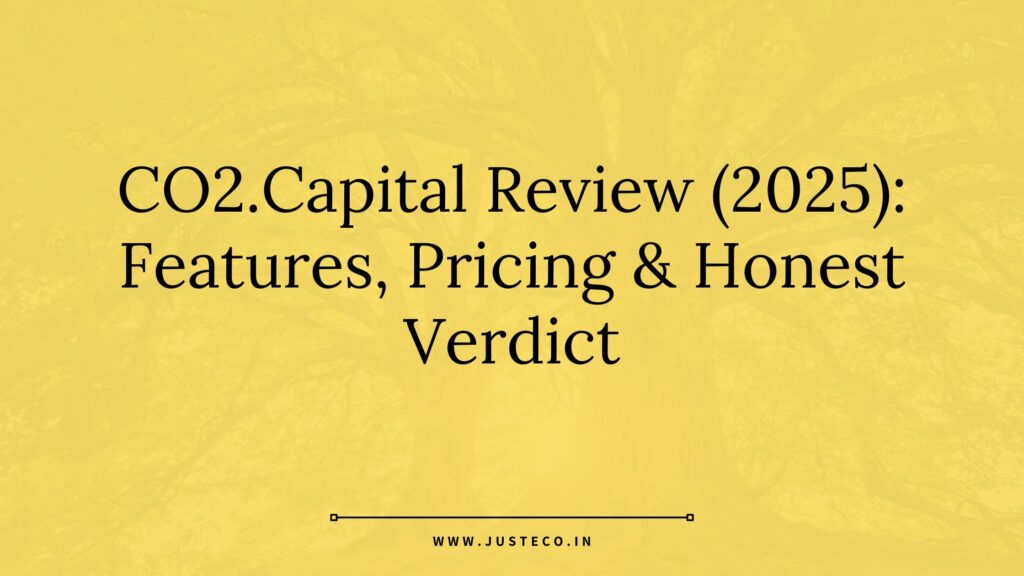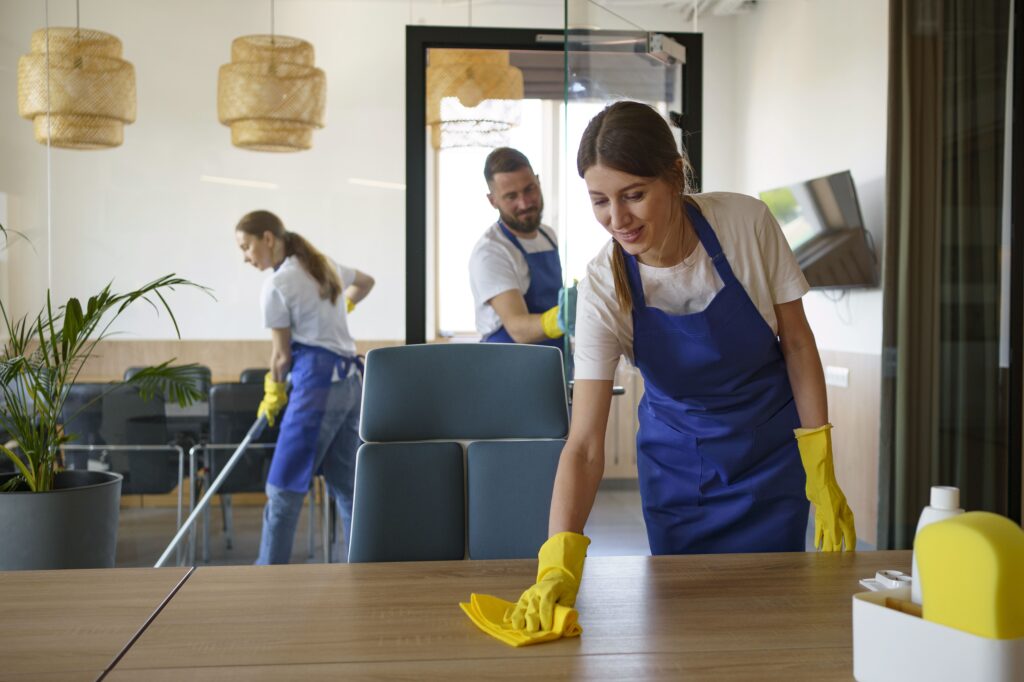CO2.Capital Review (2025): Features, Pricing & Honest Verdict
The conversation around sustainable investing has evolved rapidly in recent years, with digital platforms making it easier than ever to align financial portfolios with climate goals. Among these platforms, CO2.Capital has been gaining attention in 2025 for its promise to simplify carbon-conscious investing. But with the surge of new tools in this space, it’s important to separate genuine impact-driven platforms from those that simply leverage green branding. In this CO2.Capital Review, we’ll take a closer look at what the platform actually offers, how it works, and whether it lives up to its claims. From features and pricing to user experience and real-world impact, this guide provides a transparent analysis for anyone considering CO2.Capital as part of their sustainability journey. As a sustainability professional and content writer, I approach this review with both a critical eye and a practical perspective. You’ll find not just a breakdown of the technical features but also an honest discussion about who should — and shouldn’t — use this platform. Whether you’re a retail investor curious about impact investing, a professional managing ESG portfolios, or simply someone looking to reduce the carbon footprint of your financial choices, this review will give you the clarity you need. Let’s dive into the details of CO2.Capital to see if it deserves a place in your sustainable investment toolkit. CO2.Capital Features When evaluating a platform like CO2.Capital, the most important question is whether it goes beyond buzzwords and delivers tools that genuinely help investors align with sustainability goals. Below is a deep dive into its features, broken down by function and impact. Portfolio Building Tools CO2.Capital offers customizable portfolio-building options designed to prioritize climate-positive assets. Instead of forcing investors into pre-set “green funds,” it allows flexibility. You can filter by carbon intensity, renewable energy allocation, or ESG ratings. This approach helps investors maintain control while staying aligned with climate goals. A key strength is that the platform integrates both traditional equities and emerging green assets, including clean tech startups and verified carbon removal projects. The balance between accessibility and innovation sets it apart from platforms that only focus on mainstream ESG funds. Carbon Footprint Tracking A standout feature is the real-time carbon tracking dashboard. Unlike platforms that offer vague sustainability scores, CO2.Capital quantifies the carbon footprint of each portfolio holding. This is expressed in tons of CO₂ emissions avoided or offset per year. Investors can see both positive contributions (renewables, carbon credits) and negative exposures (fossil-heavy holdings). The transparency makes it easier to adjust allocations. For users serious about impact investing, this feature provides clarity that’s often missing in ESG products. If you want to track your investments in this way, you can check your portfolio impact with CO2.Capital. Integration with Sustainable Assets The platform doesn’t just stop at stocks or ETFs. It gives access to: This broader asset coverage enables diversification without compromising on climate goals. Retail investors who previously found such investments inaccessible now have an entry point through CO2.Capital. Transparency & Reporting Tools CO2.Capital puts a strong emphasis on transparency. Users receive impact reports that show not just financial returns but also environmental outcomes. These reports include metrics such as: This feature supports long-term accountability and allows investors to share their impact with stakeholders or communities. User Experience The platform is designed with simplicity in mind. The interface is clean, with guided onboarding that helps beginners navigate sustainable investing. Its mobile app mirrors the desktop version, ensuring consistency. Notable highlights: The only drawback is that some advanced reports are locked behind premium plans, which may frustrate free users. Still, the overall user experience feels polished and intuitive. Pros and Cons Pros: Cons: Sustainability Impact One of the most compelling aspects of CO2.Capital is its measurable contribution to sustainability. The platform partners with certified organizations to validate projects, ensuring investments lead to genuine emissions reductions. Unlike many ESG funds criticized for greenwashing, CO2.Capital links your portfolio to tangible climate outcomes. For example, a portion of fees goes directly into verified carbon removal initiatives. This means that even passive users contribute to climate solutions. For those seeking more active involvement, the platform highlights opportunities in renewable energy financing and clean-tech innovation. If sustainable impact matters to you, CO2.Capital can help you invest in climate-positive assets. Final Take on Features Overall, CO2.Capital excels in combining accessibility with impact. The features cater to beginners and experienced investors alike, while its emphasis on transparency builds trust. The sustainability integration isn’t just marketing—it has measurable results. While some limitations exist, particularly around premium-only tools, the platform sets a strong standard for what modern climate-conscious investing should look like. If you want to explore its functionality first-hand, get started with CO2.Capital today. To illustrate how CO2.Capital’s features work in practice, consider this scenario: A user invests $5,000 into a diversified sustainable portfolio through CO2.Capital. The portfolio includes: Within the first year, the platform’s reporting shows: This case highlights the measurable sustainability outcomes that CO2.Capital tracks. Instead of abstract ESG scores, investors can see concrete figures that reflect the environmental impact of their money. CO2.Capital Pricing & Plans When considering any investment platform, pricing is just as important as features. CO2.Capital takes a tiered approach to access, balancing free tools with premium offerings for serious investors. Free Plan The free plan is designed for beginners who want to experiment without financial commitment. It includes: While functional, the free plan is best viewed as a trial. Its biggest drawback is the restriction on detailed analytics and advanced asset classes. Still, it’s a valuable starting point for those curious about climate-conscious investing. If you’re just starting out, CO2.Capital has lots to offer in its free plan. Premium Plans CO2.Capital offers several premium tiers, structured around portfolio size and features. The premium plans unlock the true power of the platform. Features like verified carbon credit access and detailed reporting justify the price for anyone serious about long-term sustainability. Hidden Fees and Costs Unlike some competitors, CO2.Capital is transparent about fees. There are no hidden transaction charges, though
CO2.Capital Review (2025): Features, Pricing & Honest Verdict Read More »





